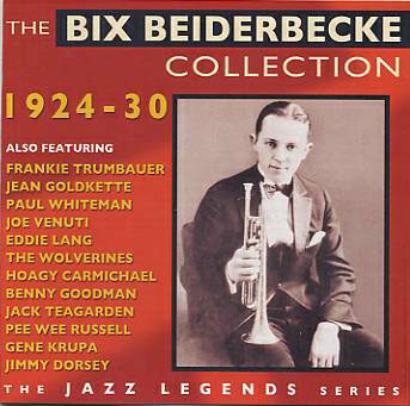CD Review
Bert Thompson
CD 1
Fidgety Feet; Oh, Baby!; Copenhagen; Susie; I Need Some Pettin’;
Tiger Rag; Sensation; Lazy Daddy; Tia Juana; Big Boy; I Didn’t Know;
Toddlin’ Blues; Davenport Blues; Idolizing; Sunday; Proud of a Baby like
You; I’m Gonna Meet My Sweetie Now; My Pretty Girl; Look at the
World and Smile; Trumbology; Slow River; For No Reason at All in C; In
My Merry Oldsmobile; There’s a Cradle in Caroline; In a Mist (Bixology).
CD 2
Clementine; Wringin’ and Twistin’; Krazy Kat; Humpty Dumpty;
There Ain’t No Land like Dixieland to Me; Just an Hour of Love; I’m
Wonderin’ Who; (What Are You Waiting for) Mary;
Lonely Melody; There Ain’t No Sweet Man That’s Worth the Salt of My
Tears; Dardanella; Mississippi Mud; Sugar; Lovable; Thou Swell; My Pet;
Tain’t So, Honey, Tain’t So; Sentimental Baby; Futuristic Rhythm; I’m in
Seventh Heaven; Reaching for Someone (and Not Finding Anyone
There); Oh Miss Hannah; Waiting at the End of the Road; I’ll Be a Friend
with Pleasure; Georgia on My Mind.
Personnel:
Various aggregations, including The Wolverine Orchestra, Jean
Goldkette and His Orchestra, Frankie Trumbauer and His Orchestra, and
Paul Whiteman and His Orchestra, among others. All tracks include
Beiderbecke. Complete personnel for each track is listed in the
accompanying booklet.
Recording dates and locations vary.
All data is provided in the accompanying booklet.
Joining the fairly large number of reissues on CD of the Beiderbecke
canon, this is a companion issue to a previous one by Fabulous, titled
Bix Beiderbecke 1924-1930 [not 1927 as stated in the booklet] (FABCD
144), the booklet assuring us there is no duplication of tracks on the two
issues. Between the pair one would certainly have a good
representation of Beiderbecke’s output.
Like many artists who die young—he was only 28—Beiderbecke has
attained a certain legendary status, that in part being occasioned by the
tantalizing question: what might he have accomplished had he had
more time? But what he did manage to accomplish before the ravages
of alcoholism, coupled perhaps with pneumonia, terminated his life
and career is illustrated here.
The two main components of Beiderbecke’s playing are his tone, often
likened to a bell chime, and his ideas, often described as heralds of the
jazz to come some two or three decades later. Both qualities are in
evidence in this compilation, but most prominently in the tracks where
he is accompanied by a small group, such as the Wolverines (some half
of the first CD) or his own Rhythm Jugglers or his Gang, and has the
room to explore—and be heard—in both soloing and supporting others
in the group.
There are quite a few tracks here, however, that nicely illustrate his
qualities. (One of the best examples of these is Jazz Me Blues, a track
that is unfortunately not in this program but is in the other collection,
FABCD 144.) Unfortunately the sound quality on some of these early
tracks is not of the best, particularly on those numbers recorded
acoustically (those pre-1925), but Big Boy (where Beiderbecke takes a
piano solo, as well as playing cornet) and, especially, Davenport Blues,
his own composition, for two, exemplify on this set the “Bixian”
delivery. His considerable piano talent is displayed in the “Tram, Bix,
and Eddie” trio’s version of For No Reason at All in C and in his solo
rendition of his own composition In a Mist.
In the large groups, Beiderbecke tends to be “buried” in a welter of
brass and reeds and, in the Whiteman case (some half of the second
CD), strings, only emerging for a “hot” solo chorus or two and then
submerging again. Certainly his choruses are worth hearing and for the
moment supply interest, but it is an all too brief respite from Whiteman’
s “symphonic jazz.” Whiteman’s title of “King of Jazz” was something
of a misnomer, especially when compared to that of other “kings” such
as Oliver and Keppard, but he staffed his orchestra with some of the
best talent around and had them playing tightly scored numbers—not a
note out of place, but not much soul. Danceable—but not swinging. He
must be given credit, too, for providing much employment for his
musicians, and he was very generous to Beiderbecke, keeping him on
the payroll long after he was no longer capable of playing in the
orchestra.
For those who have little or no Beiderbecke in their collections and for
those who are partial to the dance aggregations of the 20’s and early 30’
s, this double CD compilation may be of interest, especially since it
contains the lagniappe of Beiderbecke on solos. Despite the booklet’s
assertion that further attempts to improve the sound could not be made
without degrading it, I think the transfers could have been better.
Perhaps the budget price will recompense some of these shortcomings.
Available on line on Amazon and CD Universe and, probably, eBay.
|
|





